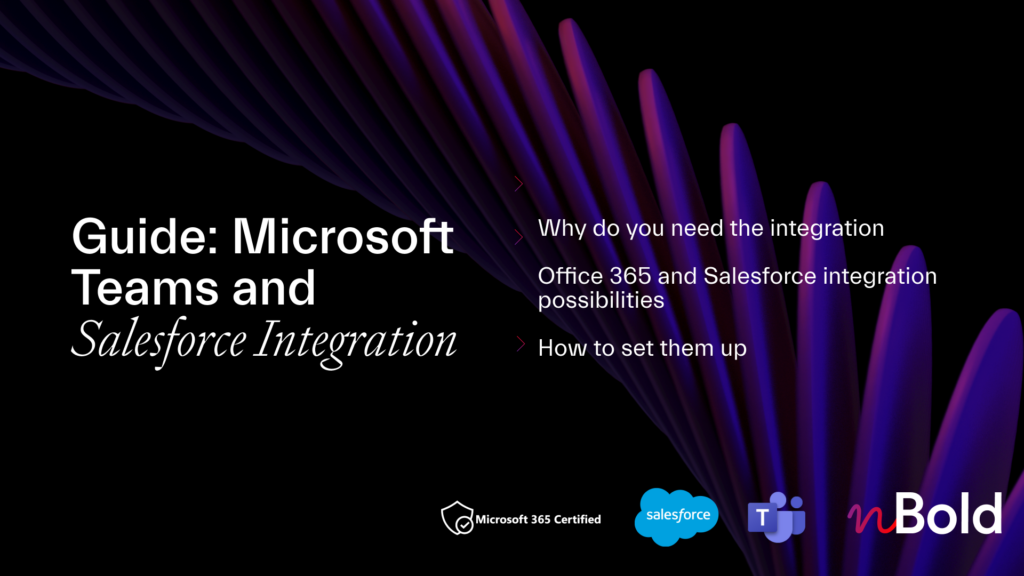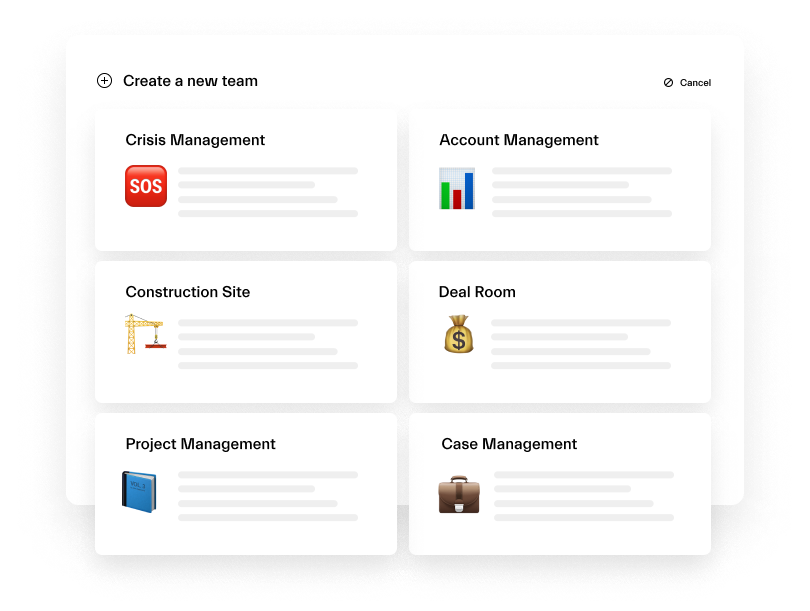CSO Insights found that 61% of companies use a sales enablement program to provide sales teams with the tools and training to make a measurable business impact.
However, many of these programs fall flat, as made evident by the fact that only 34% of sales teams report that their sales enablement matches or exceeds their expectations. Many businesses are using sales enablement strategies that are inadequate.
On the other hand, the right sales enablement tools can empower your salespeople to prepare to talk to a potential customer in a matter of minutes. This requires a well-defined messaging infrastructure to convey the message, and sales enablement techniques can help you build it.
Let’s explore the top sales enablement practices that can increase business revenue.
What is sales enablement?
Sales enablement is a way to attract more sales and revenue for a business. In fact, it’s a holistic sales strategy that equips sales teams with resources, such as training, technology, etc., to close deals, including the difficult ones.
Typically, it involves your marketing and sales teams. Organizations can effortlessly create alignment within the company, improve sales efficiency, and build lifelong customer relationships.

Why is sales enablement important?
Engaging with prospective customers is critical to building and maintaining strong client relationships and striking deals. However, sales teams require the right structure and support to make it happen.
Sales enablement helps teams acquire a competitive edge by providing every sales rep with the tools and data to lead positive buying experiences.
In short, it gives valuable and necessary information to sales teams to get the job done. The data can vary: it can be the tools, resources, and practices sellers use to work efficiently and effectively or the content they provide to customers.
With proper sales enablement strategies and tools, sales teams can expect:
- Increased revenue (for instance, 76% of companies see a dramatic sales increase between 6 and 20%)
- Better relationships with customers
- Allows sales reps to spend more time selling
- Increased customer acquisition and reduced costs
- Alignment between marketing and sales departments
Creating a strong sales enablement plan helps companies organize, analyze, and share content so sellers can meet customers’ ever-changing needs.
How is sales enablement different from sales readiness?
It’s easy to mix up sales enablement for readiness and vice-versa. Sales enablement is a broad framework involving everything frontline representatives require to sell more.
In contrast, sales readiness enables representatives to apply training in real-life and check if they can produce meaningful engagements with prospective customers and reach targets. It blends training and practice to evaluate preparedness.
Consider sales readiness a part of sales enablement. This recipe creates well-equipped sales teams to improve conversions and increase top-line growth.
10 sales enablement strategies to empower your teams
Here are a few sales enablement best practices.
1. Set goals and KPIs
Aligning sales enablement with corporate objectives is essential for success. However, you must also include key performance indicators to ensure that the targets are attainable.
What is the timeline for introducing the plan to the group? How frequently do you intend to evaluate the company’s sales enablement materials?
If you know when these milestones need to be reached, you’ll have a better time setting benchmarks and monitoring the progress of your sales enablement initiatives over time.

2. Enhance sales content and make it accessible
The purpose of sales enablement material is to aid sales representatives in establishing trust, informing potential customers, and removing objections to the sale. 95% of customers are more likely to purchase from a company if they are provided with relevant content at every stage of the buying process.
Therefore, your sales and marketing departments must work together to produce the appropriate material to address inquiries from prospects and quickly close business.
Moreover, 90% of content created is never used by sales teams. Why? They just can’t seem to find it. It looks like a simple issue to solve.
Making content readily available from a single location is essential. And this is where nBold can help you implement a sales enablement strategy. With nBold’s customized templates for sales collaboration processes, reps can effortlessly get all the relevant data within Microsoft Teams whenever they have a new account/deal open.
This way, they don’t have to look for the right data: file templates, guidelines, document libraries, necessary resources, and other content is easily accessible and visible.

3. Prioritize customer experience
Since sales enablement aims to improve salespeople’s ability to interact with the buyer, it stands to reason that the customer experience should serve as your strategy’s focal point.
No two customers are alike, so it’s crucial to truly understand your customers and identify various touchpoints, including pain points, in the experience.
You can start by creating a detailed buyer persona. It helps you determine useful buyer types, target and connect the right audiences, and deliver valuable content.
4. Leverage useful data
Good sales enablement strategies use data to manage the sales team effectively and help them understand what works and what doesn’t. Use KPIs (key performance indicators) from previous sales and marketing campaigns to achieve this.
Make smart goals for areas you wish to improve. Also, focus on achieving a higher ranking on SERPs by assessing your existing sales KPIs.
Quota attainment, customer engagement, closing ratios, productivity, etc., are a few sales enablement metrics you should track routinely through email lists, content pieces, and other resources.
Ensure you collect the right sales information to make your sales enablement strategy effective and successful. Decision-making can be challenging if you lack current sales data.
Here are a few things to consider when gathering sales data:
- Know what data you need (customer stories, satisfaction ratings, win/loss ratio, length, etc.)
- Collect it consistently (setup onboarding procedures and system to gather sales data in a similar fashion)
- Analyze data to identify the latest patterns and trends to make better decisions

5. Ensure technology adoption
75% of companies take four months (minimum) to close a deal and win a customer. According to one report, 27% of reps say long sales cycles are a barrier to sales effectiveness.
Inadequate tools can affect your sales, so it’s best to incorporate tech stacks. Many sales enablement tools are available today, including customer relationship management systems, sales enablement systems, engagement programs, etc., that help automates, scale, and evaluate your enablement programs.
Make sure each sales team member knows how to operate the tech to its fullest potential.

Guide: Microsoft Teams and Salesforce Integration
- Why you should integrate Salesforce with Teams
- All integration possibilities
- Most demanded use cases
- How to set up the integrations
6. Maintain a consistent focus on sales training and education
What good are state-of-the-art sales enablement and customer relationship management solutions if the sales staff is unwilling or unable to implement them?
If salespeople don’t see these tools’ benefits, they won’t use them. So you need to educate and train them to help them understand and use the tools better.
Conduct monthly sales training and education programs so reps won’t forget what they learn and the tools, content, and information they receive.
Also, you can employ collaboration platforms and newsletters to keep sales enablement before sales teams.

7. Prioritize leads
The sales team has to prioritize which leads they need to contact first. There’s a range of effective ways reps can use to prioritize leads.
For a long time, marketing automation tools and platforms have allowed lead-scoring mechanisms. However, it’s time to provide sales reps with prioritized task lists based on backend algorithms
This way, when a sales team starts the day, they know who to target and reach first. And when new leads pop in, they can be reprioritized automatically.
8. Maintain cross-team collaboration
The entire structure could fail, wasting time, money, and resources if your sales enablement team doesn’t promote collaboration and communication.
It’s increasingly helpful to connect sales and marketing teams. According to ReachForce and Marketo, companies are 67% better at securing deals when marketing and sales teams work together.
Involve both teams in a process, so your strategy works effectively. To create this alignment, ensure communication flow remains intact during the process.
Schedule regular meetings with stakeholders from both teams and connect them using digital platforms to see uninterrupted collaboration.
You can use nBold’s Collaboration Templates to create fully equipped digital workspaces where your sales reps can work together with members of other teams to collaborate on deals, accounts, and other sales activities. They ensure seamless coordination and communication flow between your teams and departments.
Your company will be able to make unique templates for every kind of collaborative activity, and it will give your teams the required data, tasks, resources, and guidelines.

9. Specify responsibilities for each position
The average salesperson spends less than 36% of their time selling and only 18% of their time using a customer relationship management system.
Clearly outlining the roles and responsibilities of sales representatives is one way to increase their focus on sales. If you want your plan to succeed, you must assign duties to each individual, team, and department.
After all, effective sales enablement strategies don’t just define goals and ways to achieve business growth. They also assign roles and responsibilities to perform means and attain set targets.
So, delegating roles to efforts and outlining clear expectations and timelines is crucial when you craft a strategy.
For example, your sales representative is responsible for closing deals, discovery calls, and documentation. The sales operations will check data analysis and prospecting while the enablement function generates qualified leads to target pitches.
To achieve a winning strategy, delegate relevant duties and roles to members.
10. Establish onboarding process
Getting new salespeople up to speed and keeping them around depends on a solid onboarding process. According to the Society for Human Resource Management, the average onboarding procedure boosts a new hire’s productivity by 50%. It’s all the more important nowadays when recruits often feel lonely as well as burnt out.
All new reps must undergo ramp-up periods, a time for new salespeople to complete training and achieve full productivity. According to one report, it takes 3.2 months (on average) for new reps to ramp up.
However, you can minimize ramp time by third if you incorporate tech stacks.
To learn more about how to successfully onboard new sales reps, head over to this article.
Ending note on sales enablement
Sales enablement doesn’t need to be time-consuming and complicated. You can easily attain the things you aim for with proper strategies, best practices, and team members.
Hopefully, using these best practices and effective tips, you can build a winning sales enablement strategy for your organization.
When your sales team feels informed and confident, so do the buyers. And that’s when you start to win.
